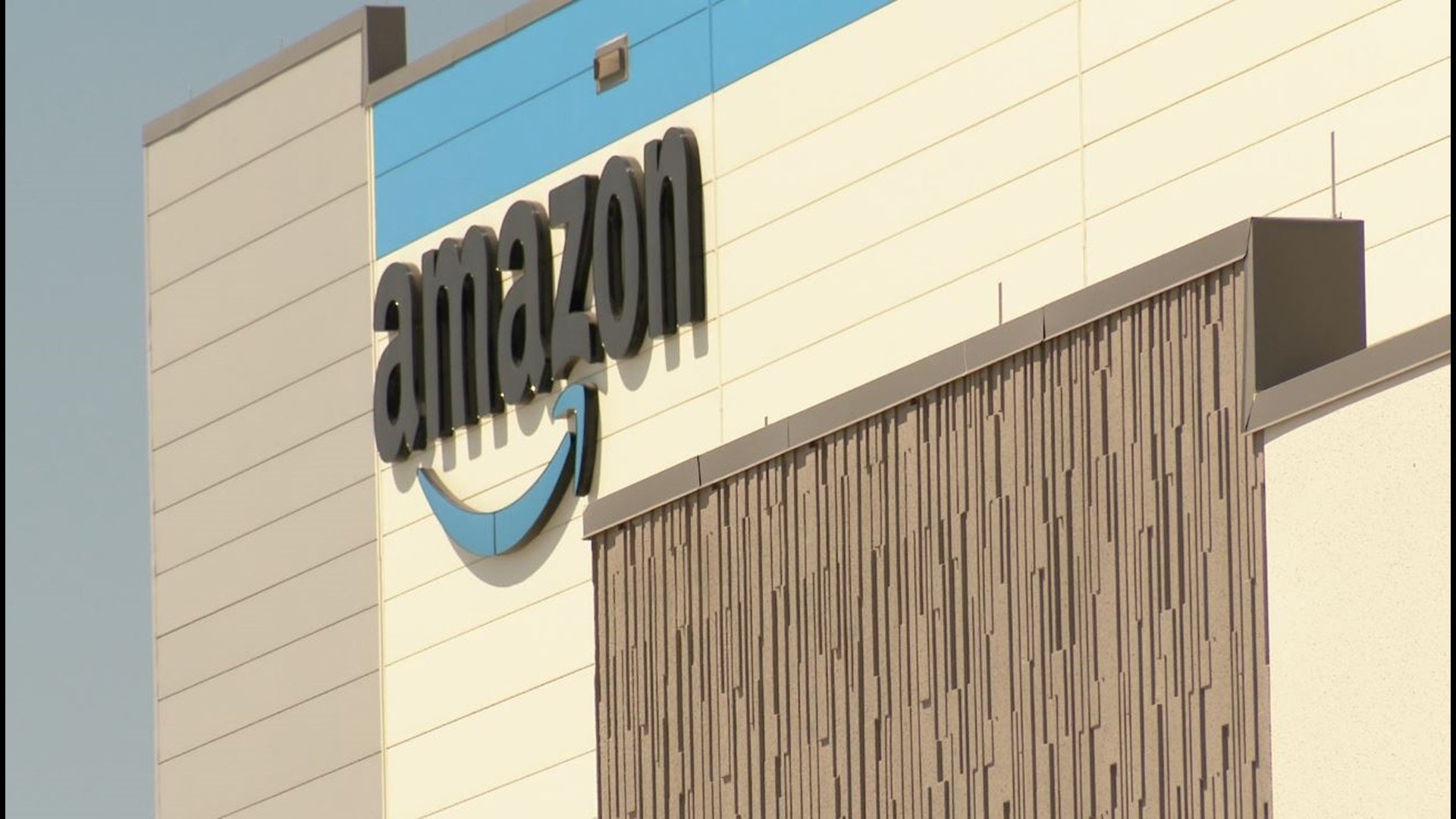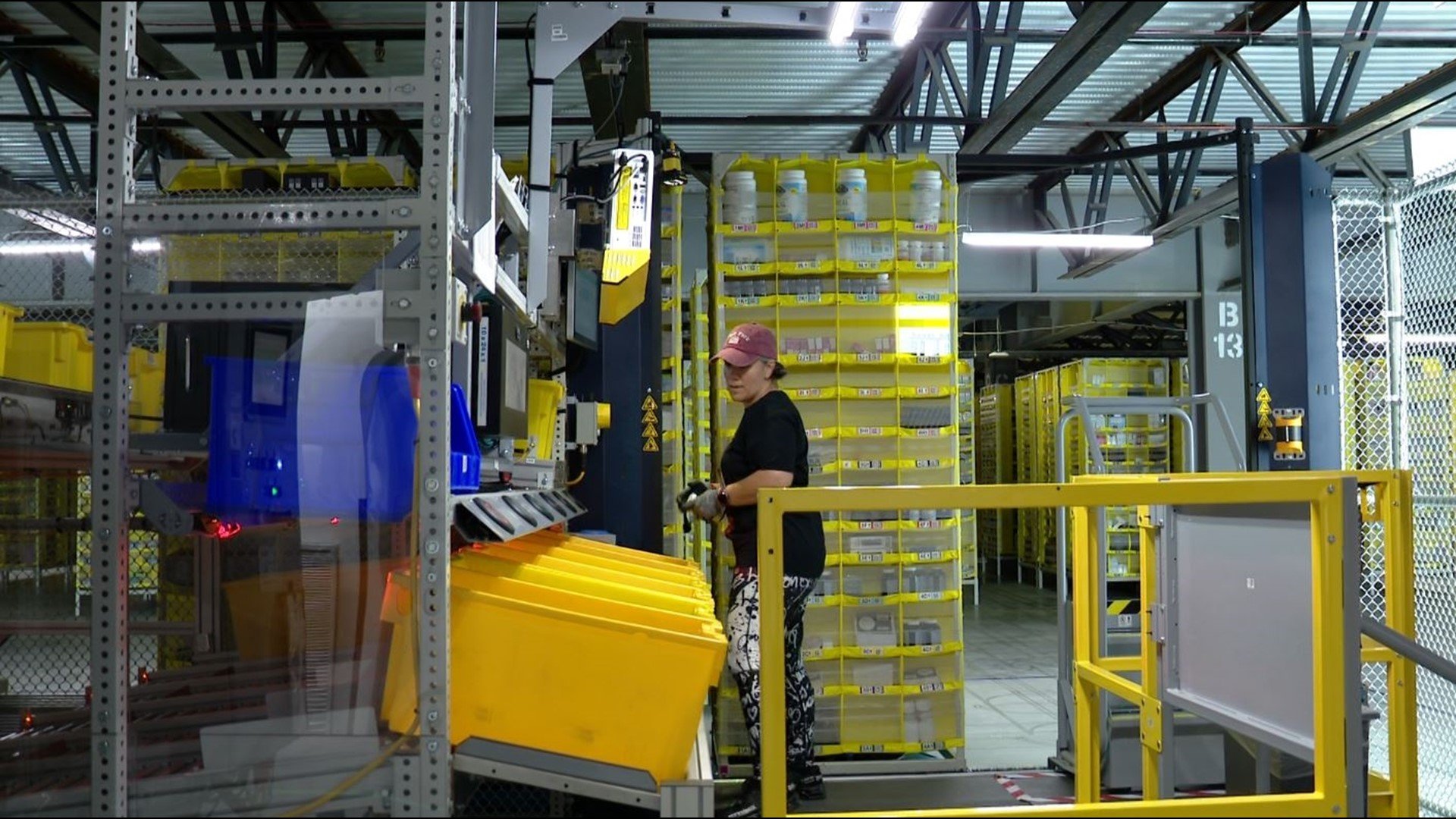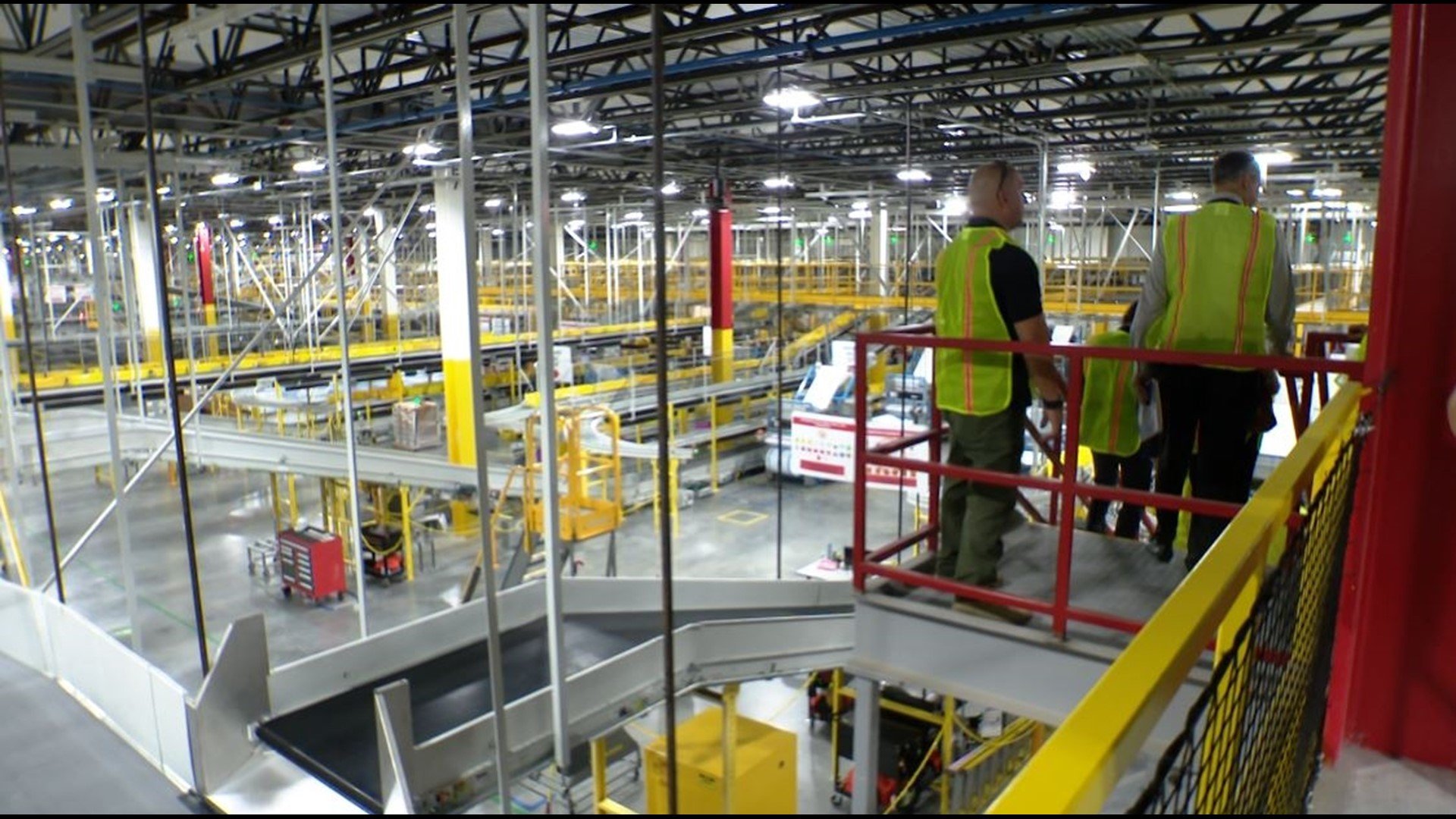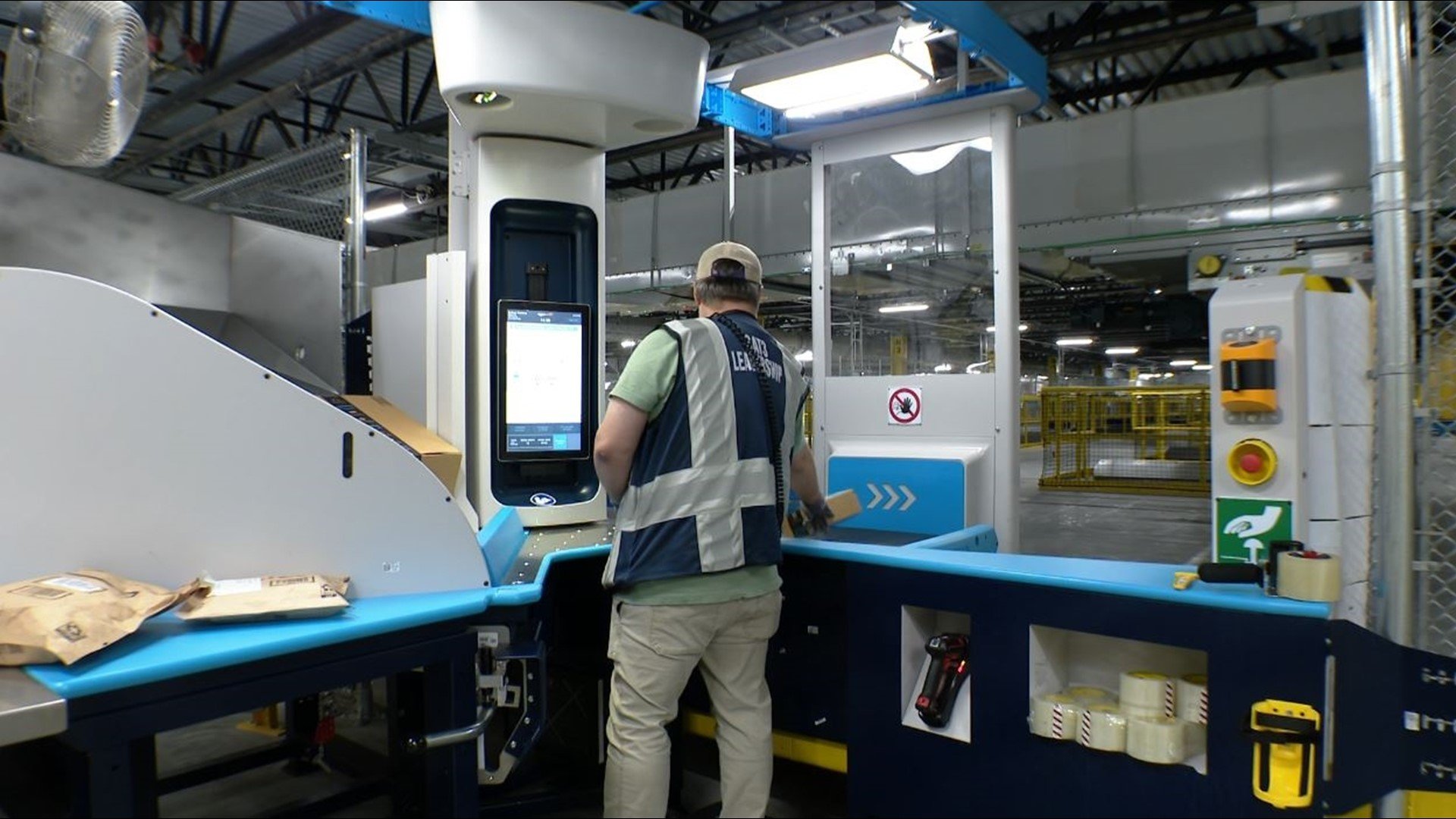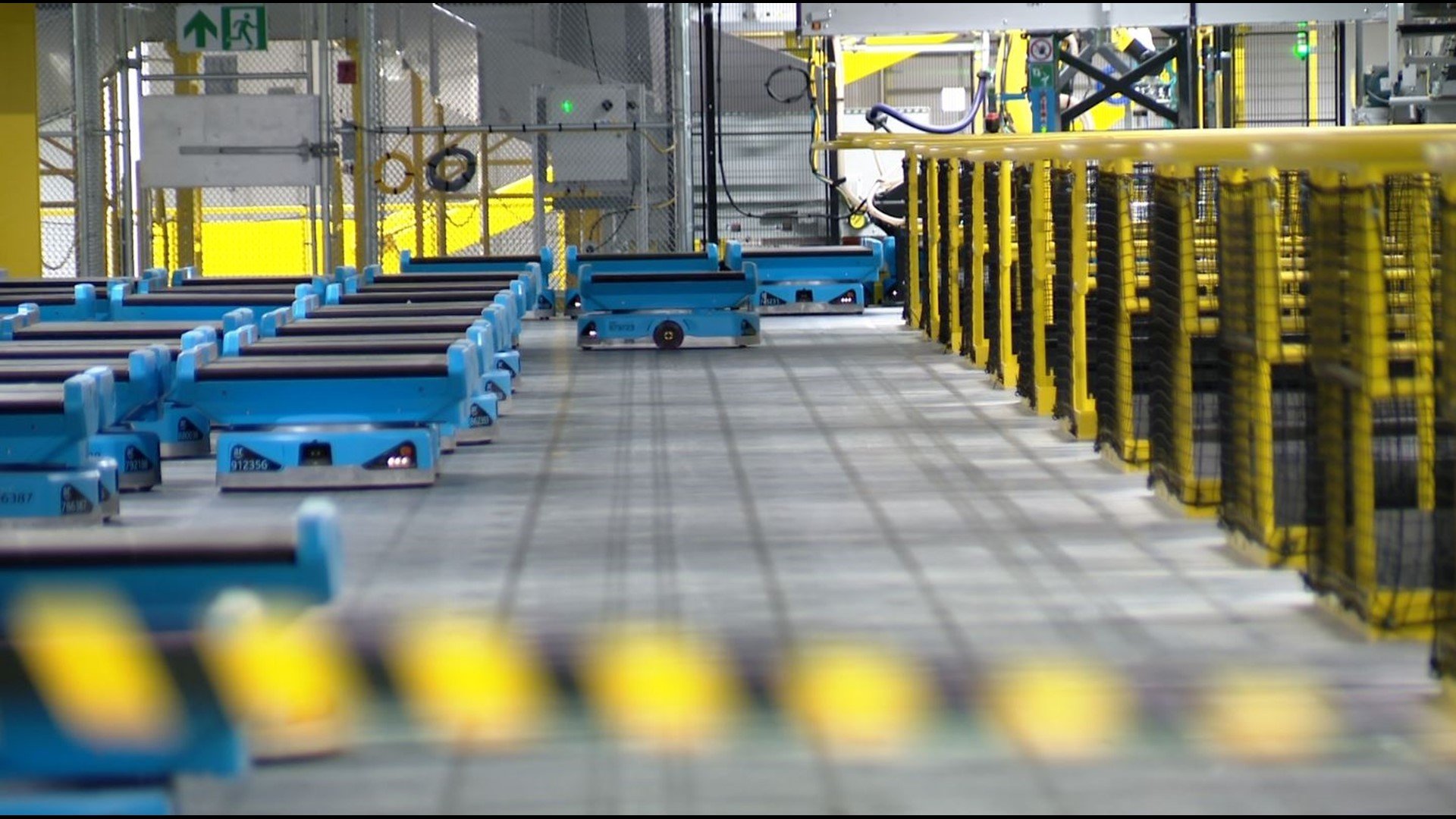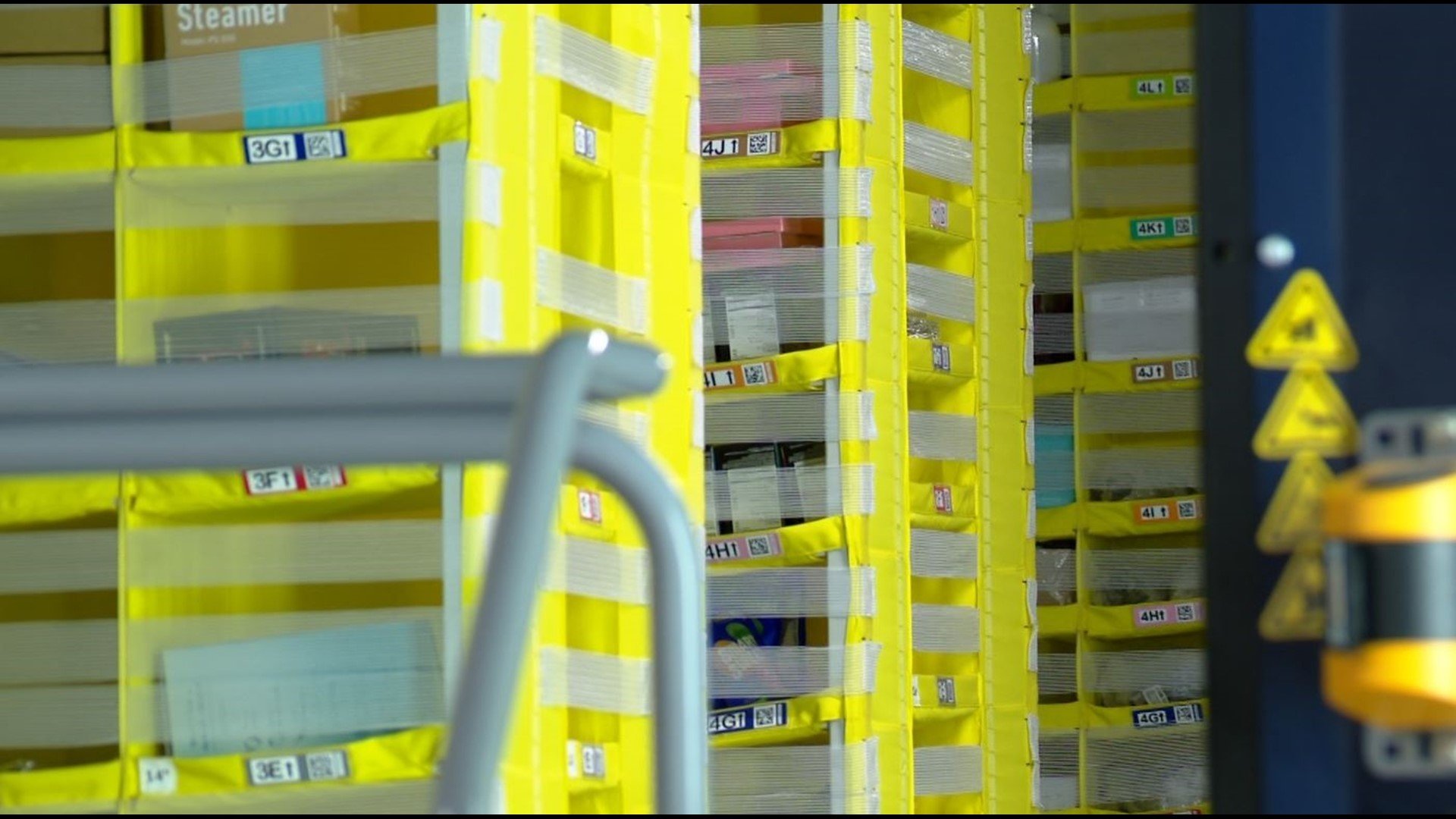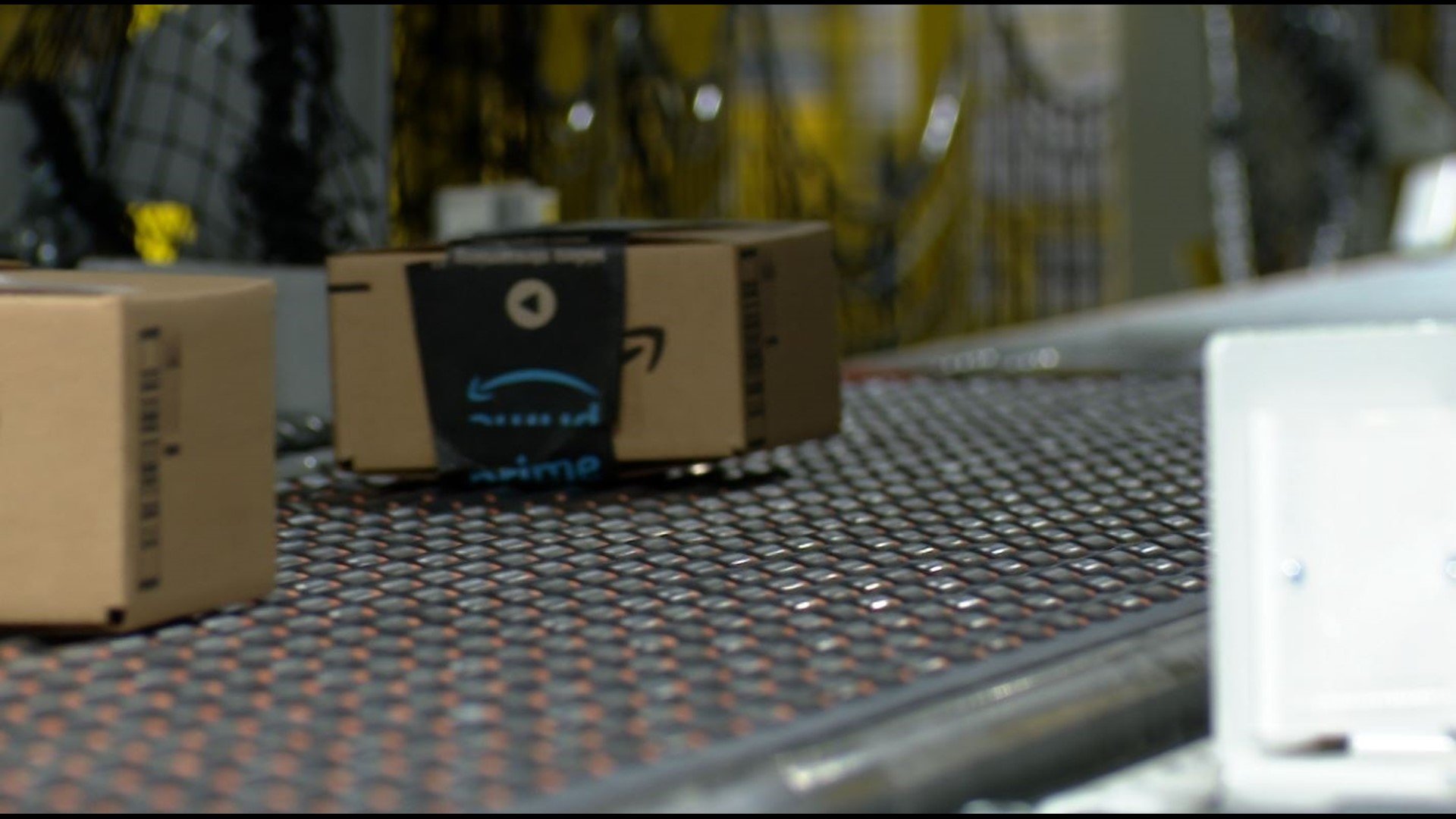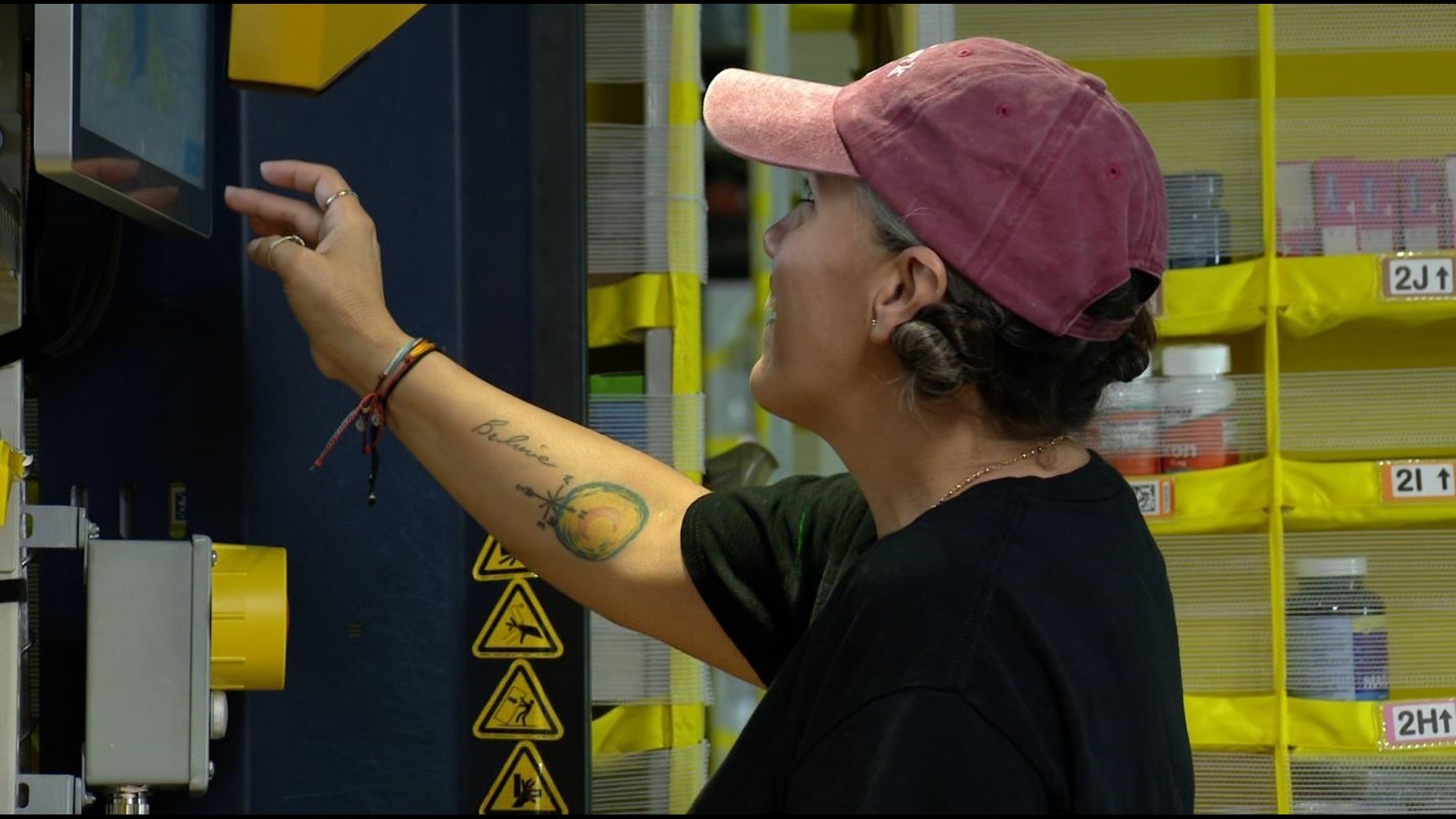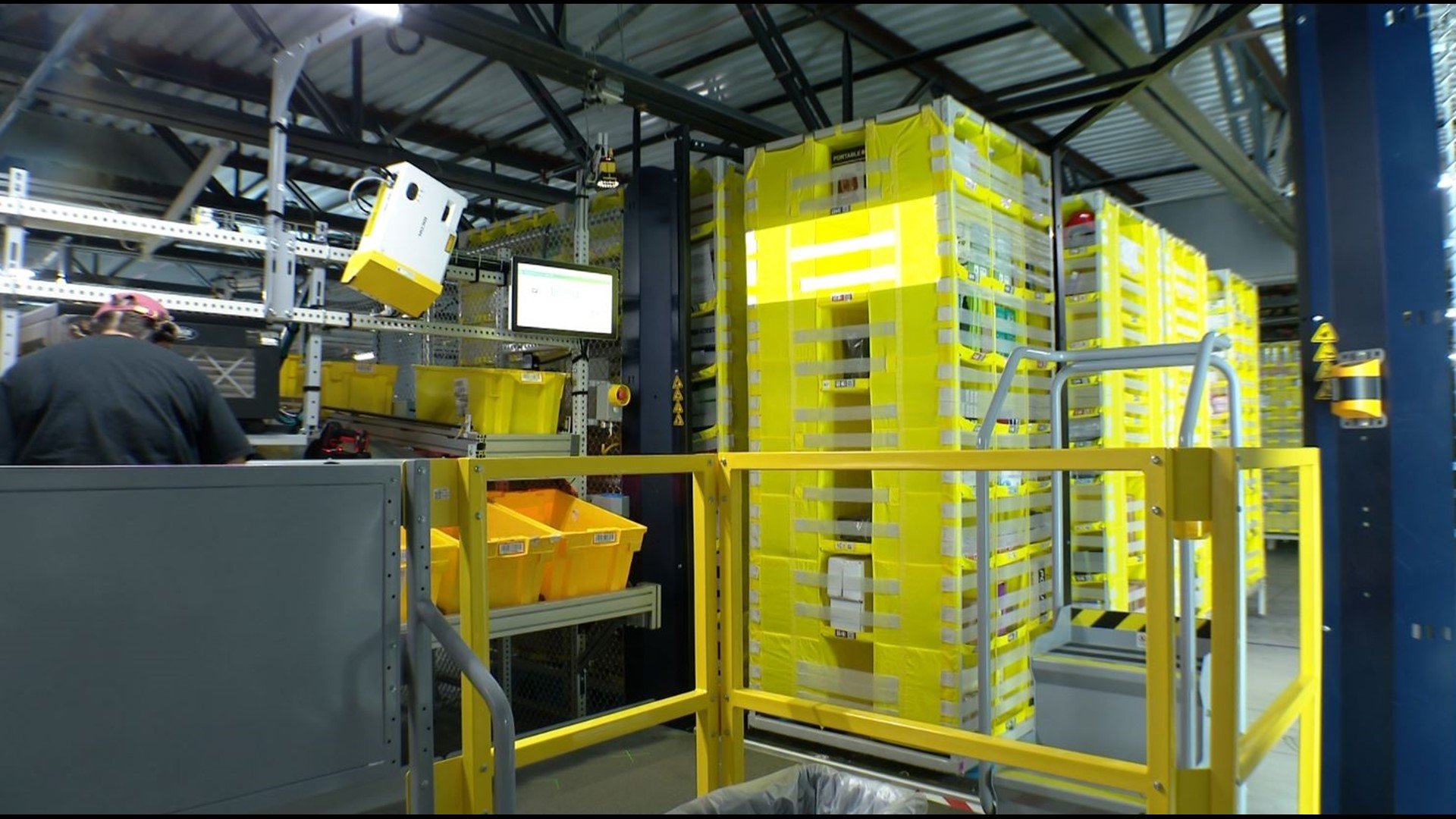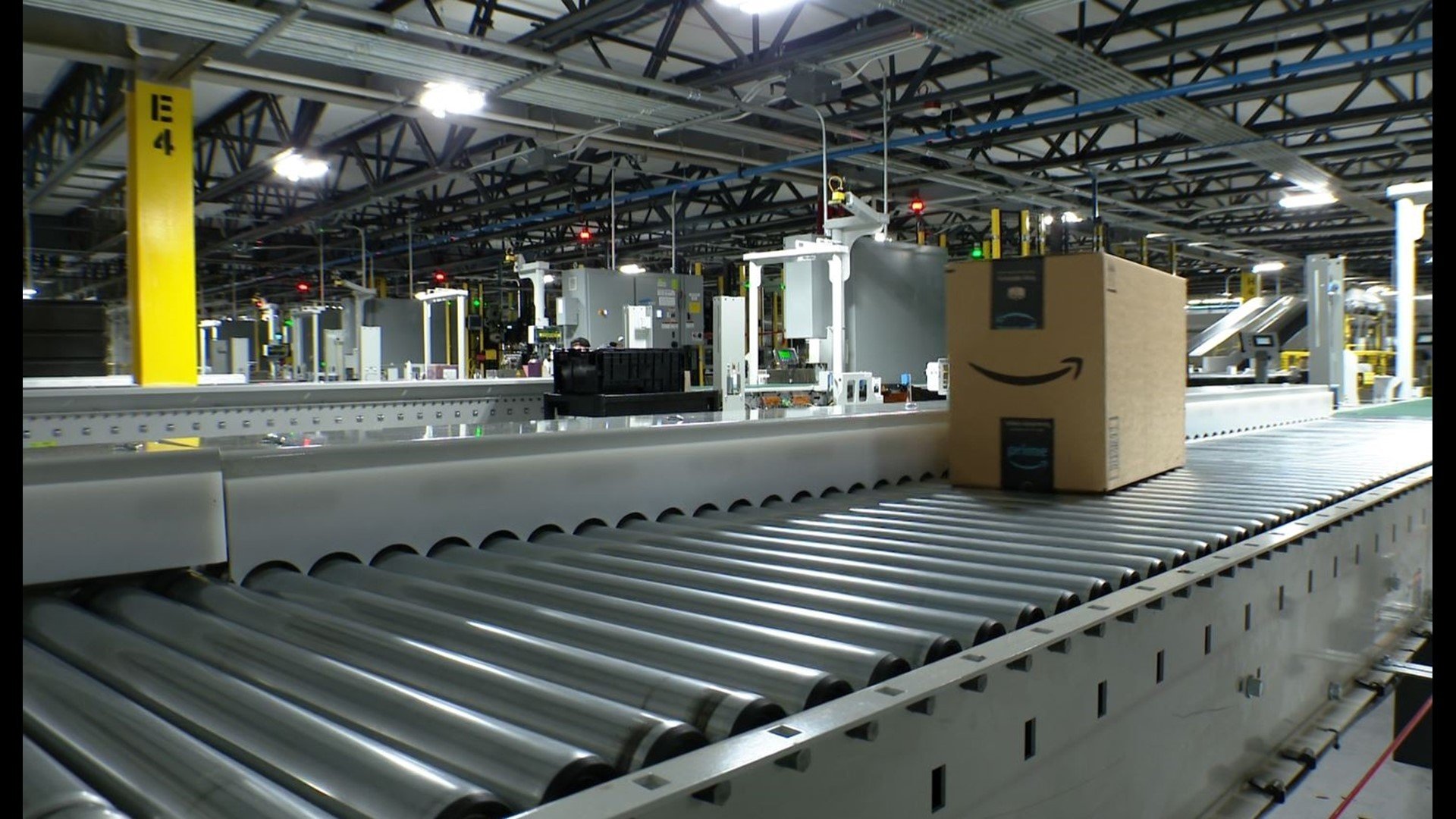Amazon using AI tools to reduce its injury rates
Businesses turn to artificial-intelligence-powered tools to prevent injuries, although workers express reservations - How Companies Are Using AI to Make Work Safer
At Amazon’s EWR9 fulfillment center in Carteret, N.J., a warehouse near the New Jersey Turnpike, the workers don’t walk to and from shelves. The shelves come to workers.
About 45,000 pods—the name given to the four-sided shelving units—are shuffled around the 1.3-million-square-foot facility on self-driving units that hoist and carry them to workers in a kind of choreographed waltz. Those workers either fill the pods with arriving goods or empty them to build packages for shoppers.
Most of the facility’s 3,000 employees, including the top manager, aren’t allowed to enter that area, even to lean over to retrieve an item they have dropped. The specialists permitted to move amid the shuffling units must don a specialized vest that syncs up via radio and acts almost like a sort of electric force field, helping direct the pods around them. An AI system situated in the cloud helps oversee the pods’ movements.
Amazon calls the approach of moving the shelves a “goods-to-person” automated system. The design, which uses artificial intelligence and sensors, is meant to promote a mix of efficiency, ergonomics and safety, with the thinking that it is ultimately better to have shelving units, rather than employees, scurrying around its cavernous facilities. Globally, Amazon has about 750,000 autonomous robots to move around its shelving pods. Though most operate in specialized zones, its newest design is intended to mingle with workers and move around them as though navigating a cocktail party, said Tye Brady, chief technologist at Amazon Robotics.
“We include AI and Machine Learning (ML) to make our fulfillment centers safer,” Brady said. “These bets that we’re making with collaborative robots are really starting to pay off.”
Amazon said its lost-time injury rate has fallen 69% from 2019 to 2022. Last year, lost-time injury rates were 21% higher at sites that didn’t use robotics technology.
Though U.S. workers say in surveys they are leery of AI watching over them, proponents of the technology say it can help prevent injuries that can be ruinous for workers and costly for employers. The Bureau of Labor Statistics said that about 2.2 million workers were injured on the job in 2021, the most recent year for which numbers have been published. Accidents killed 5,190 workers that year, a rise of nearly 9% from the previous year.
“The promise of AI here is that you can actually just really up-level, by an order of magnitude, to the amount of data and the quality of data that decision makers have when they’re thinking about how they predict where the next injury is going to happen,” said Josh Butler, founder and chief executive of CompScience, whose company offers AI-driven technology that feeds into a business’s existing surveillance system.
Though a person or even a team would be hard-pressed to review all the surveillance footage produced by a typical jobsite, CompScience’s AI can sift through hours of footage to find potential safety problems.
Logistics company Propak uses CompScience, which can catalog near misses between forklift drivers and other employees, to watch over a 100,000-square-foot warehouse in Mira Loma, Calif. Company officials determined they had far more near misses than they thought, even though employees were supposed to come forward to report potential accidents, said Michelle McCurry, Propak’s vice president of risk management.
“We wouldn’t have known that it was happening at the frequency that it was without having this type of data,” McCurry said. She said the company learned, for example, that the number of certain types of incidents went up when a particular manager went out of town.
Propak saw incidents fall sharply after it made some modifications such as providing floor markings and mirrors in problem areas, McCurry said. The company also redesigned a procedure for workers sorting produce in crates after the software warned that the ergonomics of the intense bending-and-lifting task could lead to injuries.
“We were able to actually implement change before any negative outcomes occurred,” she said.
Workers, when asked about AI surveillance in the workplace broadly, generally indicate that they feel wary. About 60% of respondents to a recent Pew Research Center survey said they were opposed to having AI watch their movements in the workplace, compared with 15% in favor.
Asked about those concerns, CompScience’s Butler said his company’s technology doesn’t employ facial recognition and can’t be used to single out individual employees. McCurry said Propak uses the technology to look for possible gaps in its risk-management program, and not as a tool to help discipline individual employees.
Still, the use of AI and wholesale data collection creates some legal risks companies should be aware of, said Domenique Camacho Moran, a partner at law firm Farrell Fritz who advises companies on employment law.
Companies should be mindful that they aren’t collecting personal data related to health, Moran said. Some vendors, for example, offer wearable technology meant to flag dangers such as unusual body temperatures. Although most U.S. employees at this point are used to some level of surveillance in the workplace, they should be notified of what exactly is being collected and that an AI system might be involved, she said.
Businesses also can’t plead ignorance when they are receiving reports about potential trouble, so should be prepared to act on the information given, she said.
Amazon has ample resources to put toward safety initiatives—the company has about 8,000 staff who work on safety matters and 750,000 robotic drive units globally—but some form of AI-powered safety systems are increasingly in reach of more companies.
Some workers may find the technology creepy, but proponents say it can keep them out of harm’s way, preventing some of the costs—financial and otherwise—associated with a workplace injury.
“Workplace safety is a huge problem,” CompScience’s Butler said. “We’re really looking at ways to change the systemic level of risk.”


